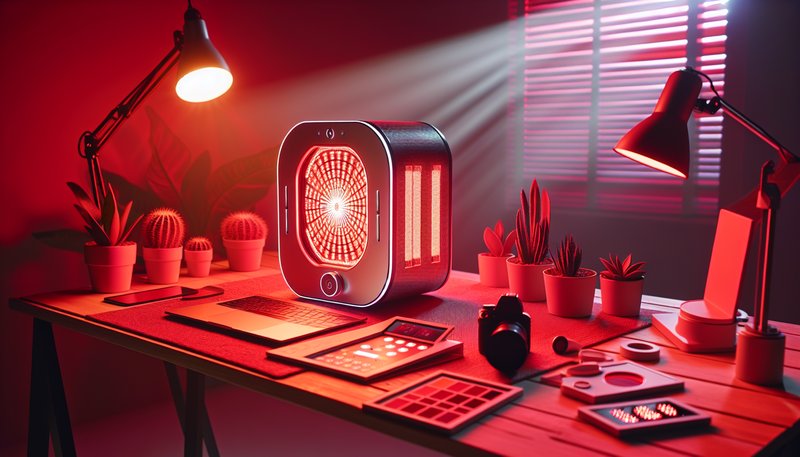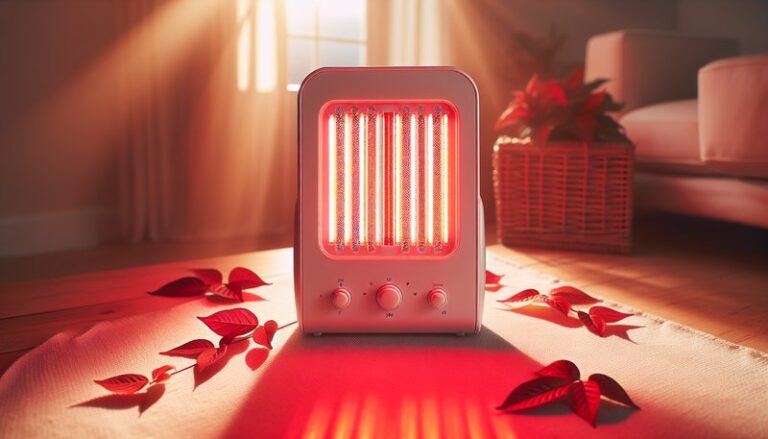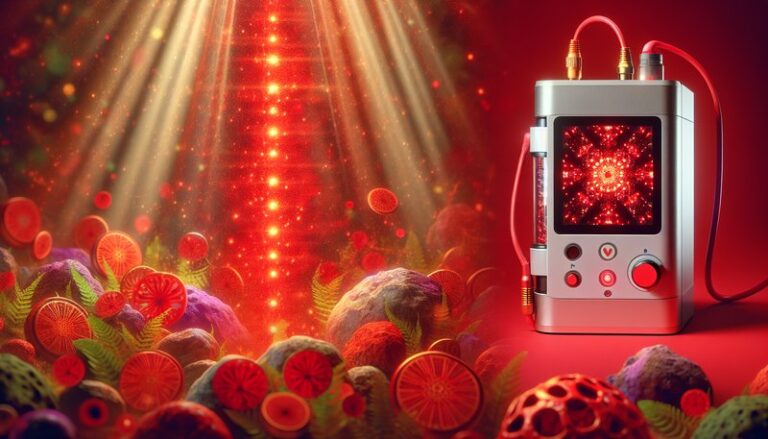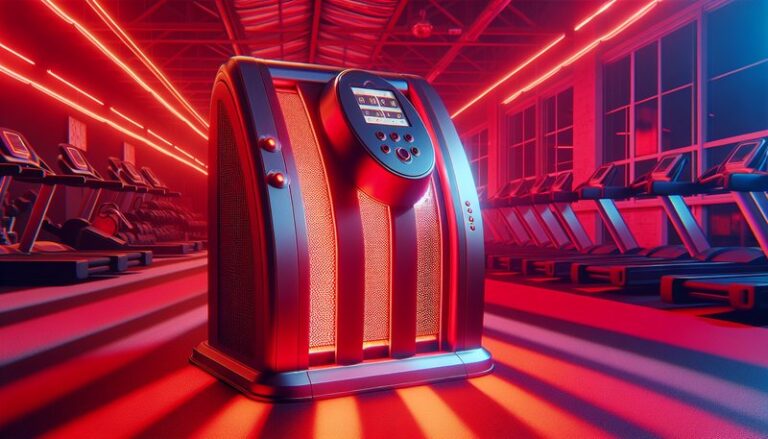What Is Red Light Therapy And Does It Work?
What Is Red Light Therapy And Does It Work?
Are you searching for a revolutionary treatment that promises to enhance your skin health, boost recovery time, and potentially alleviate pain? Red light therapy (RLT) might just be the answer you’re looking for.
In this article, we will delve into what red light therapy is, its potential benefits, considerations before starting treatment, alternative options, and whether or not it’s a recommended course of action. By the end, you should have a clearer understanding of how red light therapy works and if it is suitable for your needs.
Key Takeaways
- Red light therapy utilizes low-level wavelengths of red or near-infrared light that penetrate the skin and promote healing and rejuvenation.
- It is touted for various benefits, including enhanced skin health, improved muscle recovery, and relief from certain pain conditions.
- While RLT shows promise, it’s important to consider individual factors and explore alternative treatments before committing.
What is Red Light Therapy?
Red light therapy is a non-invasive treatment that uses specific wavelengths of light to promote various physiological processes in the body. Generally, it employs red light (around 630-660 nm) and near-infrared light (850-880 nm), which can penetrate the skin and interact with cells.
This technology has its roots in medicine and has been used for decades, primarily for wound healing and pain relief. As research progressed, its application expanded into beauty and wellness, and today, it is widely used in clinics, spas, and even at home.
Understanding how red light therapy works begins with its interaction at the cellular level. When the light is absorbed by the skin, it stimulates the mitochondria, the powerhouses of the cell, boosting their production of adenosine triphosphate (ATP), which is crucial for cellular energy and repair processes.
What are the Benefits of Red Light Therapy?
The potential benefits of red light therapy are vast, impacting both physical and aesthetic concerns. Here, we explore some of the prominent advantages:
Enhanced Skin Health
One of the most celebrated benefits of RLT is its positive effects on skin conditions. It is known to promote collagen production, improve skin elasticity, reduce wrinkles, and aid in the healing of acne scars. Many users report a more youthful and vibrant complexion after consistent treatments.
Improved Muscle Recovery
Athletes frequently use red light therapy to expedite recovery from workouts and injuries. RLT enhances circulation, which supports reduced inflammation and alleviation of soreness, allowing for quicker recovery times post-exercise.
Pain Relief
Red light therapy has shown potential in managing chronic pain conditions, such as arthritis or joint pain. Studies indicate that RLT can significantly reduce symptoms by decreasing inflammation and enhancing tissue repair.
Additional Benefits
There are further claims surrounding red light therapy, including its ability to improve mood and sleep quality, enhance hair growth, and even support weight loss. However, comprehensive studies are still necessary to validate these claims.
Is it Possible to Achieve Results with Red Light Therapy?
Achieving results with red light therapy is indeed possible, but it depends on several factors, including the condition being treated, the device used, and consistency of treatments.
What are the Advantages of Using Red Light Therapy?
RLT offers an array of advantages, including:
- Non-Invasive Treatment: As a non-invasive option, RLT minimizes risk and discomfort compared to more aggressive therapies.
- Minimal Side Effects: Most users experience few to no side effects, making it a safe choice for many individuals.
- Convenient Use: With the availability of at-home devices, individuals can easily incorporate RLT into their daily routines.
What are the Disadvantages of Using Red Light Therapy?
While red light therapy is promising, there are some disadvantages to consider:
- Variable Efficacy: Results can vary significantly among individuals, and not everyone may experience the same benefits.
- Lack of Regulation: The market is flooded with devices of different quality and effectiveness, making it challenging to choose a reliable one.
- Time-Consuming: Optimal results often require consistent sessions over time, which may be inconvenient for some individuals.
What are the Things to Consider Before Trying Red Light Therapy?
Before committing to red light therapy, consider the following factors:
Skin Type Compatibility
Understanding your skin type and any existing skin conditions is crucial. For instance, those with certain light sensitivities or conditions should consult a dermatologist beforehand.
Device Quality
Not all red light therapy devices are created equal. Research the brand, check for user reviews, and ensure the device emits the right wavelengths for effective treatment.
Treatment Frequency and Duration
Determining how often and for how long to use red light therapy is essential for achieving desired results. Most recommendations suggest several sessions per week for optimal effects.
Additional Considerations
Factors like personal health history and the specific conditions being treated should also guide your decision, as individual responses to RLT can vary widely.
What are the Alternatives to Red Light Therapy?
If red light therapy isn’t the right fit for you, consider these alternative treatments:
Microdermabrasion
This non-invasive procedure exfoliates the skin, removing dead cells to promote renewal and improve texture. It is effective for treating scars, fine lines, and uneven skin tone.
Chemical Peels
Chemical peels involve applying a solution to exfoliate the skin and improve appearance. They can effectively treat sun damage, acne, and pigmentation issues but may require downtime.
LED Light Therapy
Similar to RLT, LED light therapy uses different colors of light to target specific skin concerns. It can treat acne, redness, and signs of aging, making it a versatile alternative.
Additional Alternatives
There are also options like laser therapy, facials, and holistic treatments that may offer beneficial effects for various conditions.
Conclusion: Is it Recommended to Use Red Light Therapy?
Red light therapy presents an exciting option for those looking to improve their skin, recover from injury, or manage pain. While many individuals report satisfactory outcomes, it is crucial to approach it with a clear understanding of its potential benefits and limitations.
If you’re considering red light therapy, ensure thorough research is conducted, and consider consulting with a healthcare professional to tailor the approach to your specific needs.
Frequently Asked Questions
How long does it take to see results from red light therapy?
Results from red light therapy may vary, but many individuals begin to see improvements within a few weeks of consistent use, depending on the condition being treated.
Is red light therapy safe for all skin types?
While red light therapy is generally considered safe for most skin types, individuals with specific conditions or sensitivities should consult a healthcare professional before use.
Get insights from Is Red Light Therapy Real?
Can I perform red light therapy at home?
Yes, there are numerous devices available for home use. It is essential to choose a high-quality device that provides the appropriate wavelengths for effective treatment.
Explore the topic in Does Red Light Therapy Treat Acne?
Is red light therapy covered by insurance?
Typically, red light therapy is considered a cosmetic treatment and may not be covered by insurance. However, some medical uses may be covered, depending on the provider and plan.
How often should I use red light therapy for optimal results?
For optimal results, many sources recommend 3-5 sessions per week for 10-20 minutes per session, but this can vary based on individual conditions and goals.





